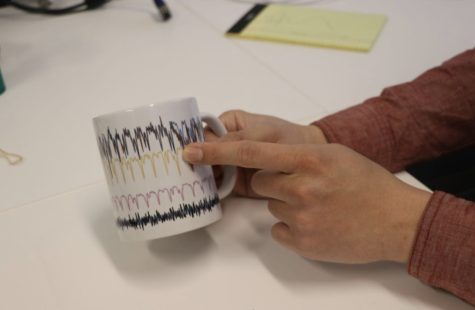NU researcher discovers 4th-ever set of ultracool dwarf binary stars
Chelsea Zhao/The Daily Northwestern
Chih-Chun “Dino” Hsu is an astrophysicist and postdoctoral researcher at Northwestern University.
June 20, 2023
Northwestern astrophysicist Chih-Chun “Dino” Hsu discovered the fourth set of dwarf binary stars ever found, in 2022. The stars, named LP 413-53AB, are closer and older than previously recorded systems.
The discovery is the result of a collaboration between Hsu and University of California San Diego astrophysicists Adam J. Burgasser and Christopher A. Theissen. The star system came into picture from an observation Hsu made while analyzing Sloan Digital Sky Survey’s archival astronomical data.
Ultracool dwarf stars are dim, red stars that are below 2,700 Kelvin, or half as hot as the sun. This category includes low-mass stars and brown dwarfs. They make up about 15% of the stellar objects in the sun’s vicinity.
Burgasser, Hsu’s Ph.D. advisor and co-author of the research, said the discovery of a binary is rare due to the difficulty in measuring them. The stars in a binary evolve around each other in the span of years or even decades.
Before, only three other systems have been identified, all of which are younger than LP 413-53AB. Hsu said further research and data evidence will allow researchers to better understand the binaries.

Because the evolution of LP 413-53AB is short, the binaries can be viewed in real time. The planetary movement would usually take years to witness, but the astrophysicists observed in these binaries in less than a day, according to Hsu.
“If you’re studying star formation, that takes 100 million years, so we’re not going to see a star form in real time,” Burgasser said. “Anytime you see a system that is changing in real time as we’re taking data for it, that’s an interesting kind of dynamic system.”
Hsu and his team made their first observation on March 13, 2022 by analyzing high-resolution data from the W. M. Keck Observatory telescopes in Hawaii.
They observed the binary more in July, October and December of last year.
“It was a very serendipitous discovery, and it does raise the question of how many more of these things are there and we just don’t have the ability really to find them,” Theissen said.
Hsu uses physical parameter radial velocity — movement data — to identify a binary star.
Burgasser said the three previously recorded ultracool dwarf binaries are observed through eclipsing or through one star blocking the other during its orbit. However, Hsu used a different method to discover LP 413-53AB.
The binary was originally thought of as a singular star. But Hsu found a discrepancy in the star’s radial velocity — the distance of the star from the observer — in its archival measurements. After examining the archival data from the Keck telescopes, Hsu observed a split of the star’s absorption lines, indicating the movement of two stars or a binary system.
“Usually there’s a single line,” Hsu said. “If there’s a binary star, then the lines will be split. That’s kind of my first rationale. I didn’t expect that it would be so successful. Just one single shot.”
The rotation of the binary is fast compared to other binaries, and the size of both stars — about the same as Jupiter — is smaller. Those attributes allow scientists to conduct their research more quickly, whereas other astronomical observations take extensive time.
Even though the LP 413-53AB pair is not habitable, Hsu said he believes studying samples of binaries alongside potentially habitable counterparts, such as another ultra-cool red dwarf star TRAPPIST-1, will reveal the frequency of habitability in the universe.
Hsu said because of how common dwarf stars are, coupled with the instruments sensitive enough to detect them, more future research will strengthen the search for habitable planets.
“These are our neighbors,” Hsu said. “So if these happen to be more common as a planet host and habitable, we should go for it– we should do more research and optimize our strategy of searching for habitable planets.”
Theissen said the research team plans to do more observation and conduct more analysis of the binary. Using the public archival data and their analytical tools, the team hopes to ascertain the orbital motion of the binary.
When Hsu presented the spectrum lines analyzed through two models and his estimation of the orbital period, Theissen remembered looking to Burgasser in recognition of the significance of Hsu’s discovery.
“I don’t know what Dino was thinking,” Theissen said. “I don’t know if he knew how cool it was at that moment, or how big it turned out to be. But I hope he has, you know, an inkling.”
Email:[email protected]
Twitter: @chelseaqizhao
Related Stories:
— Summer Food Service Program offers free meals for Evanston youth while building community
— Evanston Community Fridges see increased demand, introduce new initiatives over the summer
— Saving up this summer? Here are some student-friendly spending options for food, transport and more


